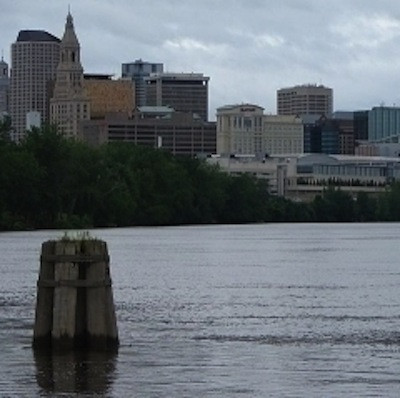John Perilli: RI’s Real Spending Problem: We Don’t Spend Enough
Wednesday, February 19, 2014
Rhode Island needs to spend more money to stimulate the economy, believes John Perilli. Photo: Flickr/401(k)2013
Now don't get me wrong––this does not mean I'm against saving taxpayers money. The two ideas aren't incompatible. I don't think we should just throw away money at useless projects or doomed ventures. But for too long, Rhode Island has been in the business of scrambling for short-term savings only to starve ourselves out in the long run.
What we need is a new approach: a short-term boost of spending which could accelerate our economy. It wouldn't even necessarily be permanent, but it might just send down our chart-topping 9.1 percent unemployment and give us some economic growth to be proud of.
GET THE LATEST BREAKING NEWS HERE -- SIGN UP FOR GOLOCAL FREE DAILY EBLASTStimulus Versus Stagnation
Whenever you hear about Rhode Island's "spending problem," it is always about how we spend too much. From state workers to social welfare, the complaint is always that Rhode Island is too gluttonous, and that we ought to cut back.
I'm here to tell you that's bunk.
Economics tells us that during a recession, the government's best response is to provide a boost of spending in the short term to stop the bleeding, and make up the deficits after the economy has recovered. This is about as close to empirical fact as things come in the field, and it has been proven many times over in practice.
Consider the United States's response to the Great Recession and the financial collapse of 2008 and 2009. Instead of sitting back and tightening our collective belt, newly elected President Obama pushed through an $800 billion stimulus package, which increased our 2009 federal deficit to an unprecedented $1.4 trillion but helped turn our economic freefall into a respectable recovery.
Compare this to Great Britain's response to the financial collapse. Rather than spend money to stimulate the economy, the conservative government of David Cameron imposed harsh austerity measures and deep budget cuts. And rather than bounce back, the British economy stalled, and in 2013 narrowly avoided sinking into not just a double-dip, but a triple-dip recession.
These are but two of a welter of examples, and I encourage everyone to check the cross-country data. But my conclusion is clear: Almost without exception, stimulus ends recessions, while austerity extends them.
Now, Rhode Island can't run massive deficits like the United States can: unlike the federal government, we're bound by a balanced budget provision in our state constitution that keeps our income and spending close, if not equal.
But we're still not using all the stimulus tools we have available.
In Rhode Island's Fiscal Year 2010 budget, enacted at the end of the 2009 General Assembly session, our total spending rose from $7.4 to $7.8 billion, a modest increase that reflected the stimulus money we received from the federal government. But between fiscal years 2010 and 2014, our budget rose only to $8.2 billion, an anemic increase of around five percent. Over those four years, that's only around a one and a quarter percent increase per year, not even keeping up with inflation.
When we talk about stimulus, total spending is important, but trends are even more so. And Rhode Island's stimulus record has been trending in the wrong direction.
A Tale of Lost Revenue
But rather than act, Rhode Island has constantly looked for ways to cut back. Through the 2006 income tax cuts for our state's wealthiest citizens, we have starved ourselves of much-needed revenue. And rather than put our money to good use, we've bungled it on handouts to undeserving companies like 38 Studios.
One of the most insidious effects of this slice-and-deal attitude is the dismal situation of our state workforce. Currently, Rhode Island has the second-lowest percentage of government employment in the US. Our 9.1 percent unemployment rate might mostly be the result of bad economic circumstances, but it is also somewhat our fault.
When workers lose jobs during a recession, their skills immediately start going out of date, making it harder for them to get a job in the future. As I've noted before, being out of work for half a year means you have about a twelve percent chance of getting back to work in any given month. But rather than give some of these workers jobs to keep up their experience, Rhode Island slowly throttled it's state workforce.
And where has that left us? Dead last in the nation.
Getting Back to Work
This year, though, it seems like the General Assembly might be turning a corner. The overarching theme of this year's session is "workforce development," and bills are already flowing in that are meant to help Rhode Island's workforce become competitive again.
To this I say: Good! Go even further! Let's take the self-imposed restraints off our revenue stream and get some real stimulus done.
Let's embrace Sen. Harold Metts's bill that would undo the 2006 tax cuts and raise our top income tax bracket back to 7.99 percent. This means we can boost revenue without costing anyone earning below $250,000 a dime, and without driving anyone out. Let's seriously consider a bill by Rep. Edith Ajello and Sen. Josh Miller that would regulate and tax marijuana. Regardless of where you stand on the moral issue of marijuana legalization, the fact remains that the drug could provide a fountain of desperately needed revenue.
Then, let's take this money and employ more state workers, retrain many others for new jobs, and repair our dismally ranked infrastructure. We could accomplish all of this––it's just a matter of doing it.
A Change of Attitude
I'm not out to write an economic treatise on exactly, step-by-step, how our state should proceed. Nor am I out to prescribe a panacea for our state's manifold problems.
But what I do aim to do is to provide an alternative perspective. To challenge the conventional wisdom that the best way to counter our economic slump is to cut our way out of it. To ask: Are we really, as infamous tax cut crusader Grover Norquist puts it, "starving the beast," or are we just starving ourselves?
John Perilli is a native of Cumberland, RI and a junior at Brown University. He is the Communications Director for the Brown University Democrats. The opinions presented in this article do not necessarily represent those of the organizations of which John Perilli is a member.


2013_360_360_90.jpeg)













